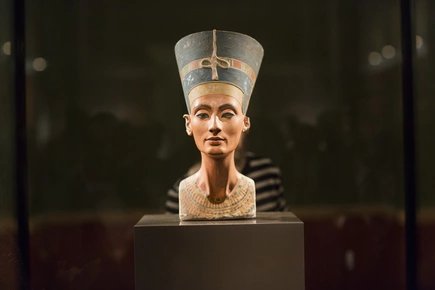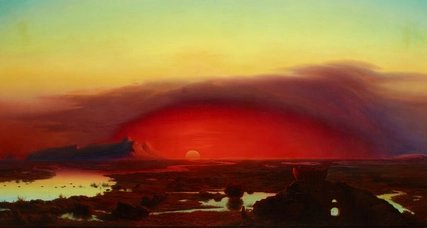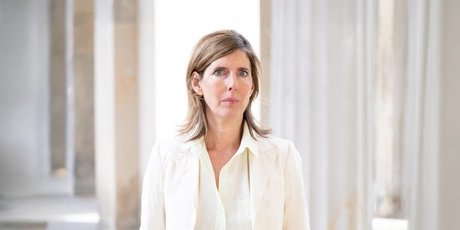
Anette Hüsch, Director of the Alte Nationalgalerie
My favourite piece from the collections
As director of the Alte Nationalgalerie, I am spoilt for choice when it comes to selecting a work. And sometimes the criteria for the selection are also idiosyncratic. Because the sun is shining so brightly today, the early summer green is so intense and the evenings are so pleasantly blue and clear, I decide in favour of a work by August Kopisch: The Pontine Marshes at Sunset from 1848.
Kopisch's painting can be seen on the third exhibition floor of the Alte Nationalgalerie, near the Caspar David Friedrich Hall, in one of the cabinets.

Enormous intensity
It is spectacular just to look at: the colours and scenery in The Pontine Marshes at Sunset are of enormous intensity. Almost too intense! The painting is part of the collection that the banker Wagener presented to the Prussian king and thus initiated the founding of the National Gallery. Kopisch himself described the work to Wagener, referring to the place near Rome, the herds of buffalo and the disc of the sun setting into the sea. The picture invites detailed contemplation, which is occupied on the one hand with discovering the landscape, the sky and the animals and on the other with the colouring and the almost artificial overall impression...
Almost like something out of a fantasy film...
I like Kopisch's work very much because, among other things, it offers many aesthetic points of reference to today's visual habits, pictorial worlds and imagery. Kopisch also shows a landscape that was often painted by artists of his generation in a very unusual way because it is so colourful.
In this version - Kopisch painted the Pontine Marshes a total of three times - the view almost seems to come from a fantasy film. Kopisch was one of the most interesting figures of the 19th century: not only was he a very good painter, but he also wrote poems, including one about the Heinzelmännchen in Cologne, which was published in the year this painting was created, and he was an inventor. He patented the so-called Berlin quick oven in 1834: This practical, spirit-fuelled invention could be used to flexibly heat small rooms. Perhaps he also used it from 1847 at his new and last residence, the Gardener's House in Sanssouci Park?
Dr. Anette Hüsch
